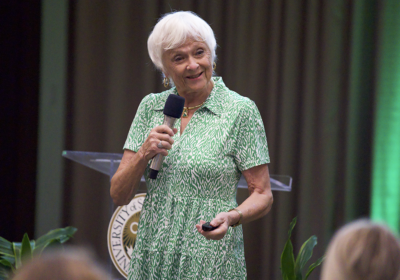First-year diversity decreases amid rise in enrollment

During Interim Provost Eric Eisenberg’s report at Tuesday’s Board of Trustees meeting, a common theme emerged of increased enrollment paired with stagnant or declining diversity numbers in certain communities for the fall semester.
More first-year students are enrolled this year than any other incoming class in the university’s history, according to Eisenberg. There was an 8% increase in this incoming class, bringing the total number of students from 6,392 last year to 6,918.
However, the increase in enrollment doesn’t mean access to the university has become easier, as Eisenberg said this year’s class saw a boost in test scores as well.
The average GPA was 4.2, up slightly from the 4.18 average score last year, Eisenberg said. In terms of testing performances, students entering USF averaged a 1309 SAT score and an ACT score of 29. Both numbers trended upward from last year, which posted averages of 1297 and 28.
Though enrollment numbers are promising, Eisenberg said the university needs to reevaluate its plan to improve diversity efforts in response to the declining number of first-time-in-college (FTIC) Black students.
This year saw a drop of 56 FTIC Black students, according to Eisenberg, although he did not provide exact numbers during the meeting.
Hispanic and Asian students have increased, he said, but not FTIC attendees, something he said needs to be addressed to grow these numbers.
To ensure immediate action is taken beyond discussions, Eisenberg said he is working closely with Vice President of Student Success Cynthia DeLuca to develop and implement a strategic enrollment plan.
Identifying specific enrollment problems is the first step toward allowing this plan to be as effective as possible, Eisenberg said.
“One of the issues that we have in terms of recruiting FTIC Black students is that we don’t necessarily get as many applications as we should,” he said. “But there’s another problem. When students get admitted to the university they don’t always choose us.
“We need to find out why they don’t choose us so that we can make the appropriate changes they do choose us. Much like our university’s strategic plan, strategic enrollment planning is a focused effort that provides clearly defined goals and actions to drive our student growth strategically, physically and in the best interest of our communities.”
The plan is estimated to be ready for implementation in the next 5-10 years, as Eisenberg said it is crucial to take the time to get to the root of the issue and avoid surface-level solutions.






